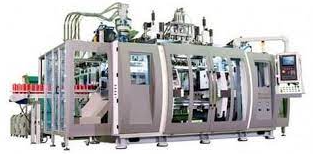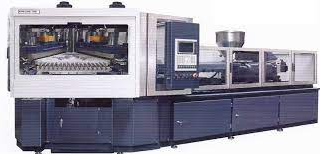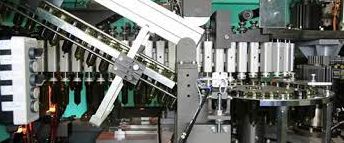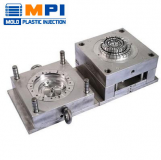Introduction
A common manufacturing method that enables the creation of hollow plastic objects in a variety of shapes and sizes is blow molding. The purpose of this essay is to provide readers a thorough grasp of how a blow molding machine operates. We will examine the various types of blow molding equipment, the detailed procedure involved, and the advantages of this ground-breaking technology. So let us dive in and see how a blow molding machine operates from the inside out.
Overview of Blow Molding
Hollow plastic pieces or containers can be produced using the manufacturing process known as blow molding. It is frequently used to make bottles, containers, automobile parts, and even toys. In this procedure, plastic material is melted, formed into a mold, and then inflated with compressed air to take the required shape.

Types of Blow Molding Machines
Extrusion, injection, and injection stretch blow molding are the three primary types of blow molding equipment.
Extrusion Blow Molding
The most used technique for making plastic bottles is extrusion blow molding. In this procedure, a hollow plastic tube called a parison is extruded and clamped into a mold. The parison is then expanded to the form of the mold cavity by blowing compressed air into it. The finished item is ejected out of the mold when it has cooled.
Injection Blow Molding
Combining injection molding and blow molding is known as injection blow molding. A test tube-shaped piece of plastic with a hole at one end called a preform is first injection molded. The preform is then moved to a blow mold, where it is inflated with compressed air until it takes on the required shape.
Injection Stretch Blow Molding
For high-quality and intricately formed containers, injection stretch blow molding is frequently utilized. It entails three steps: preform injection molding, preform axial stretching, and preform blowing into the desired shape.
The Basic Components of a Blow Molding Machine
A typical blow molding machine consists of several key components:
- Extruder: homogenizes and melts the plastic substance.
- Die Head: creates a parison out of the molten plastic.
- Clamping Unit: maintains the molds’ stability during the process.
- Blow Pin: helps the compressed air enter the conversation.
- Cooling System: After the plastic has assumed the proper shape, quickly cool it.
- Control System: oversees and controls how the equipment operates.

Step-by-Step Process of Blow Molding
Step 1: Clamping
Molds are sealed and tightly held together by the clamping unit. This guarantees that the molds shut tightly during the process’s later steps.
Step 2: Melting and Extrusion
The plastic material is fed into the extruder, typically in the form of pellets or granules. The substance is heated and melted to a constant temperature inside the extruder. The molten plastic is then pushed through a die head, which gives it the proper diameter and thickness before forming it into a parison—a hollow tube.
Step 3: Mold Closure
As soon as the parison is complete, the mold shuts. The molds are made up of two parts, and they hold the undesirable image of the finished item. The cavity where the parison will take shape is created when the molds are sealed shut.
Step 4: Blow and Cooling
A blow pin is used to introduce compressed air into the partition. The molten plastic expands and takes on the shape of the mold cavity because to the air pressure. The plastic is rapidly cooled by a cooling system at the same time, hardening it and enabling it to keep its shape.
Step 5: Ejection
The molds are opened and the finished item is evacuated from the machine when the plastic has cooled and solidified. The final hollow plastic product is produced after trimming the extra material, known as flash.
Advantages of Blow Molding
Blow molding offers several advantages that make it a preferred manufacturing process for plastic products:
- Cost-effectiveness: Compared to other manufacturing processes, blow molding enables the creation of complicated shapes at a lower cost.
- Versatility: It is appropriate for a variety of applications since it allows for the development of different forms and sizes.
- Material efficiency: By using just the right amount of plastic for each product, blow molding reduces waste.
- Rapid production: Because of the process’s speed, high-volume production and quick turnaround times are possible.
- Durability: Because of their strength and toughness, blow-molded products are well suited for demanding applications.
Conclusion
In conclusion, the blow molding manufacturing process is adaptable and effective for creating hollow plastic things. Clamping, melting and extrusion, mold closure, blow and cooling, and ejection are all steps in the sequential process. With a variety of blow molding equipment available, producers can select the best technique for their unique requirements. The benefits of blow molding, including its affordability, adaptability, and speed of production, make it a preferred option in many industries.

Frequently Asked Questions (FAQs)
- Q: Is blow molding only used for plastic bottles?
A: No, a variety of things, including toys, automotive parts, containers, and more, are produced using blow molding.
- Q: How does blow molding compare to injection molding?
A: While both methods of shaping plastic involve hollow things, blow molding, injection molding is used for solid objects..
- Q: What materials can be used in blow molding?
A: Materials including polyethylene (PE), polypropylene (PP), and polyethylene terephthalate (PET) are frequently used in blow molding.
- Q: Are blow-molded products recyclable?
A: Yes, a lot of blow-molded goods can be recycled. It is crucial to review the recycling regulations that apply in your region.
- Q: Can blow molding be used for custom designs?
A: Yes, blow molding can produce products with specific forms and dimensions, making it ideal for special design requirements.

